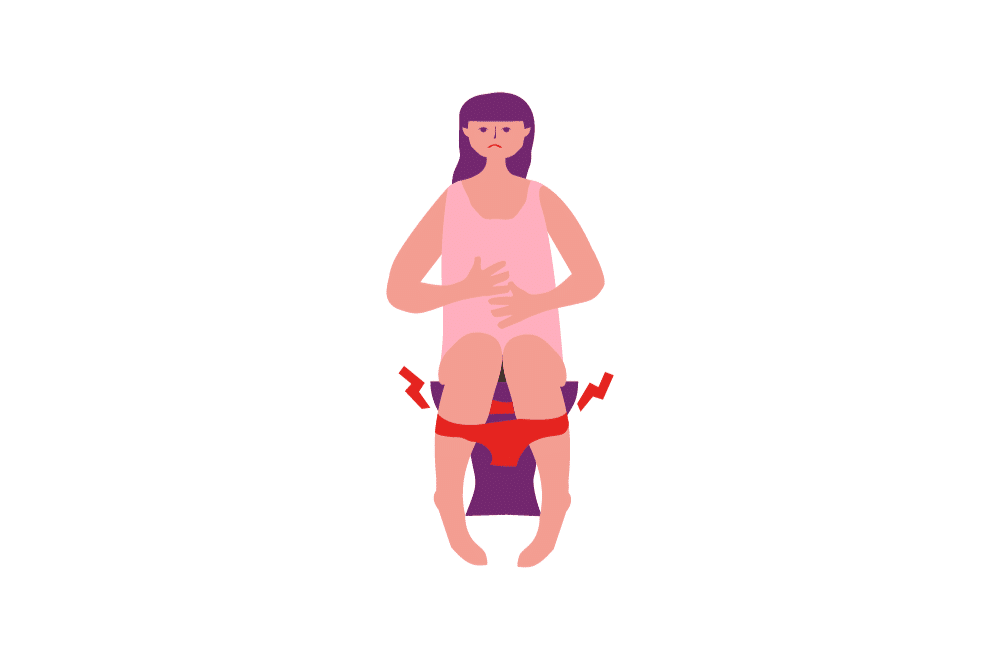Bacterial Vaginosis, commonly referred to as BV, is a common vaginal infection that occurs when there is an imbalance in the naturally occurring bacteria in the vagina.
In this blog, we delve into the details of what bacterial vaginosis is, its causes, symptoms, and treatment options, providing you with an understanding of this often-misunderstood condition. Whether you’ve recently been diagnosed with BV or are simply curious to learn more, we offer valuable insights to help you manage and treat BV effectively.
What Causes Bacterial Vaginosis?
The exact cause of bacterial vaginosis (BV) is not fully understood, but it is believed to occur due to an imbalance in the natural bacteria that inhabit the vagina. Factors that increase the likelihood of developing BV include being sexually active (as BV typically affects sexually active individuals), having a new sexual partner, not using barrier methods of contraception like condoms, having a sexual partner with a vagina, regular douching or internal vaginal cleansing, and smoking. Additionally, using a copper intra-uterine device (IUD) may also elevate the risk of BV.¹
It’s important to note that while these factors are associated with an increased risk of BV, they do not guarantee that someone will develop the infection. BV can also occur in individuals with no identifiable risk factors.

Symptoms of BV
In approximately half of all cases of bacterial vaginosis (BV), there are no noticeable symptoms.¹ However, when symptoms do occur, they typically include a white or greyish watery vaginal discharge, an unpleasant or ‘fishy’ vaginal odour, and mild irritation around the vagina and vulva. These symptoms may vary in intensity and can be more pronounced during menstrual periods or after sexual activity.¹
These symptoms are not specific to BV and can also occur with other vaginal infections, such as yeast infection or sexually transmitted infections (STIs). Therefore, if you suspect BV or experience any of these symptoms, Consult a healthcare provider for a proper diagnosis and appropriate treatment. BV can be treated with antibiotics prescribed by a healthcare professional. Left untreated, it may lead to complications or increase the risk of other infections, including STIs.

Is Bacterial Vaginosis an STD?
Bacterial vaginosis is not considered a sexually transmitted disease (STD) in the traditional sense. It is primarily characterised by an imbalance in the vaginal bacteria, with an overgrowth of certain bacteria and a decrease in beneficial Lactobacillus bacteria. While BV is not an STD, it can be associated with sexual activity and may be more common in women who are sexually active or have multiple sex partners.
Some important points to consider regarding BV and its relationship to sexual activity:
Not Exclusive to Sexual Activity
The bacterial infection of BV can occur in women who have never had sexual intercourse, which is a characteristic that sets it apart from many STDs. It can also affect women in same-sex relationships.
Association with Sexual Activity
BV has been linked to sexual activity, particularly having multiple male or female sexual partners or a new sexual partner. However, having BV does not necessarily mean that a person has an STD.
Possible Shared Bacteria
Some research suggests that sexual activity may contribute to the transmission or development of BV by introducing different types of bacteria into the vaginal environment. However, BV is not caused by a single infectious microorganism like many STDs.
So, while BV can be associated with sexual activity and may sometimes be triggered or exacerbated by it, it is not classified as a traditional STD. BV is primarily an imbalance of vaginal bacteria, and it can affect women regardless of their sexual history. If you suspect you have BV or experience symptoms, it is essential to seek medical attention for proper diagnosis and treatment. Additionally, practising safe sex measures, such as using condoms, can help reduce the risk of various sexual health issues, including BV.
How to Treat Bacterial Vaginosis?
Bacterial vaginosis (BV) can be treated with antibiotics, especially if symptoms are present or if you are pregnant to prevent complications. Treatment options include oral tablets or vaginal antibiotic creams or gels. It’s important to complete the full course of antibiotics prescribed, as BV can recur. Sometimes, multiple courses of treatment may be needed.¹
While it’s generally not necessary to treat sexual partners, BV can be spread between sexual partners. Therefore, practising safe sex practices like using condoms may help reduce the risk of transmission.
It’s important to follow your healthcare provider’s instructions regarding the dosage and duration of the antibiotic treatment. Typically, treatment lasts for 5 to 7 days. It’s essential to complete the full course of antibiotics even if your symptoms improve before you finish the medication.

Can Bacterial Vaginosis Cure Itself?
In some cases, bacterial vaginosis may resolve on its own without treatment, but it’s not guaranteed to do so. The natural course of BV varies from person to person, and some individuals may experience a spontaneous improvement in their symptoms over time. However, BV is more likely to persist or recur if left untreated, and it can lead to complications or an increased risk of other infections.
Here are a few important points to consider regarding BV and its potential to resolve without treatment:
Intermittent Symptoms: BV symptoms can come and go, making it appear as though the infection has cleared spontaneously. However, this does not necessarily mean that the underlying imbalance of vaginal bacteria has been resolved.
Risk of Complications: Untreated BV can lead to complications such as pelvic inflammatory disease (PID) and an increased risk of acquiring sexually transmitted infections (STIs) like HIV. It can also contribute to preterm birth in pregnant individuals.
Recurrence: Even if BV appears to have cleared without treatment, it often recurs in many cases. Treating BV with antibiotics is generally recommended to reduce the risk of recurrence and complications.
Given the potential risks associated with untreated BV, it is advisable to consult a healthcare provider to diagnose bacterial vaginosis if you suspect you have BV or experience symptoms. They can provide a proper diagnosis and recommend appropriate treatment options. BV is typically treated with antibiotics, and completing the full course of antibiotics as prescribed is essential to effectively clear the infection and reduce the risk of recurrence.
What Happens if Bacterial Vaginosis Goes Untreated?
If bacterial vaginosis goes untreated, it can lead to several potential complications and health risks. BV is not just a benign condition; it can have consequences if left unaddressed. Here are some of the potential outcomes and complications of untreated BV:
Increased Risk of Other Infections: Untreated BV can increase the risk of acquiring other sexually transmitted infections (STIs), including HIV. The disruption of the natural vaginal microbiota can make the genital tract more susceptible to infections.
Pelvic Inflammatory Disease (PID): BV has been associated with an increased risk of pelvic inflammatory disease, a serious infection of the female reproductive organs. PID can cause chronic pelvic pain and may lead to fertility problems or ectopic pregnancy if left untreated.
Pregnancy Complications: BV during pregnancy has been linked to an increased risk of preterm birth, premature rupture of membranes, and low birth weight. It is essential for pregnant individuals to seek treatment if they have BV to reduce these risks.
Increased Discomfort: Untreated BV can lead to persistent symptoms such as an abnormal vaginal discharge or vaginal fluid with a foul odour, itching, and irritation, which can cause discomfort and affect a person’s quality of life.
Recurrence: BV often recurs if left untreated, meaning that even if symptoms temporarily improve on their own, they are likely to return. Recurrent BV can be more challenging to manage and may require multiple treatment courses.
Chronic BV: In some cases, BV can become a chronic or long-term condition that persists for months or even years. Chronic BV can be particularly troublesome and may require ongoing treatment and management.
Risk to Sexual Partners: While BV is not considered a sexually transmitted infection (STI), it can be associated with sexual activity. Untreated BV can potentially affect your sex partner and may increase the risk of recurrent BV in both individuals.
Given these potential complications and health risks, it is essential to seek medical attention if you suspect you have BV or experience symptoms. BV is typically treated with antibiotics prescribed by a healthcare provider. Completing the full course of antibiotics as directed is essential to effectively clear the infection and reduce the risk of complications. If you have concerns about BV or its impact on your health, consult a healthcare professional for guidance and appropriate treatment.

How to Prevent Bacterial Vaginosis
Preventing bacterial vaginosis or reducing the risk of its recurrence involves adopting good hygiene practices and making some lifestyle choices to help maintain a balanced vaginal microbiome. While BV can sometimes occur without an obvious cause, here are some strategies to help prevent BV:
Practice Safe Sex: Using condoms consistently and correctly can reduce the risk of BV and other sexually transmitted infections (STIs). Limiting the number of sex partners can also lower the risk.
Avoid Douching: Douching disrupts the natural balance of vaginal bacteria and can increase the risk of BV. The vagina is self-cleaning, and douching is generally not recommended.
Be Mindful of Hygiene Products: Avoid using harsh soaps, bubble baths, scented hygiene products, and strong detergents in the genital area. Opt for mild, unscented soaps for gentle cleansing.
Limit Antibiotic Use: Antibiotics can disrupt the balance of vaginal bacteria. Only take antibiotics when prescribed by a healthcare provider and complete the full course as directed.
Probiotics: Some research suggests that consuming probiotics containing beneficial Lactobacillus strains may help maintain a healthy vaginal microbiome. You can find probiotics as supplements or in certain foods like yoghurt.
Avoid Smoking: If you smoke, consider quitting smoking, as smoking has been associated with an increased risk of BV.
Limit Alcohol Consumption: When taking antibiotics, it’s important to avoid alcohol, as it can cause unpleasant side effects.
Manage Chronic Health Conditions: If you have chronic conditions like diabetes, work with your healthcare provider to manage them effectively. Uncontrolled diabetes can increase the risk of BV.
Wear Cotton Underwear: Choose breathable, cotton underwear, which can help keep the vaginal area dry and reduce the risk of BV.
Stay Informed: Educate yourself about BV, its symptoms, and risk factors so you can recognise it early and seek prompt treatment if needed.
Regular Checkups: Visit your healthcare provider for regular gynaecological checkups and STD screenings. Early detection and treatment of BV or other vaginal infections can help prevent complications. Find out how to get tested for STDs in Australia.
While these strategies can reduce the risk of BV, they may not guarantee complete prevention, as BV can sometimes occur without an identifiable cause. If you suspect you have BV or experience symptoms, consult a healthcare provider for a proper diagnosis and appropriate treatment. Effective management and early intervention can help minimise the impact of BV on your health and well-being.
Source
- Australia H. Bacterial vaginosis (BV) [Internet]. www.healthdirect.gov.au. 2024 [cited 2024 Jun 17]. Available from: https://www.healthdirect.gov.au/bacterial-vaginosis#causes







